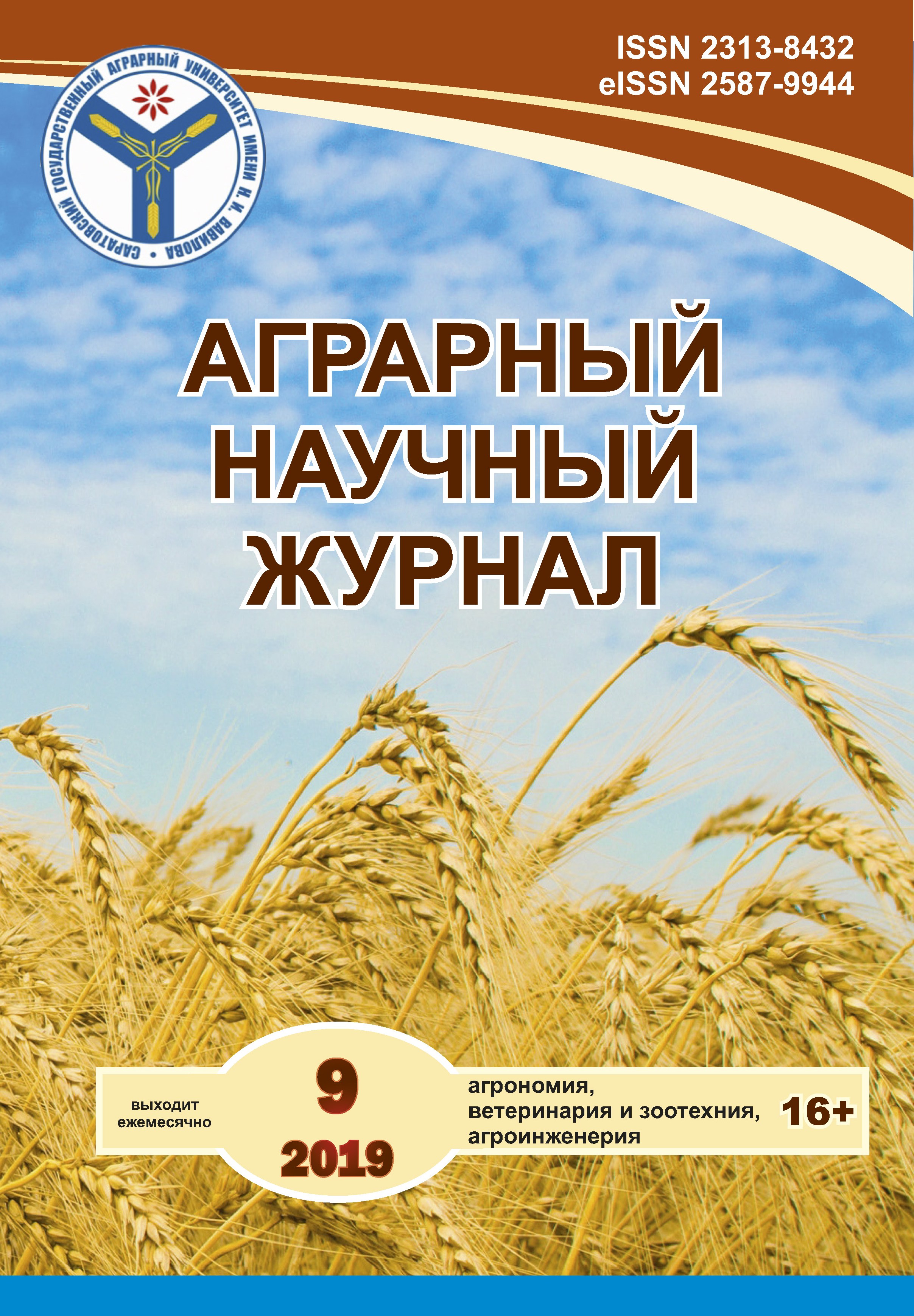Biological control of early blight on potato caused by Altrnaria solani by microbial antagonists
DOI:
https://doi.org/10.28983/asj.y2019i9pp4-10Keywords:
potato, early blight (Alternaria solani), microbial antagonists, in vitro, in vivoAbstract
Early blight (Alternaria solani) is a potential disease of potato that reduces its production globally both in conventional and tunnel cultivations. Due to variability in pathogenic isolates, prolonged active disease cycle phase and broad host range early blight is very difficult to manage. 8 microorganisms as a bioagent exhibiting inhibitory affects against Alternaria solani, were screened for their activity towards A. solani by a dual culture in vitro assay and in vivo (whole plant) test.in vitro studies indicated that the microorganism’s strains strongly inhibited the mycelial growth of the pathogen. The effect of microorganism’s strains on the mycelial growth (mm) of the pathogen proved to be highest with Trichoderma sp. (0.55) followed by Pseudomonas brassica cearum (0.74) and Pseudomonas jessenii (0.81) on the high concentration (106 cells ml-1) compared to the control (2.30). On the other hand, Bacillus mycoides (2.14) in vivo studies 9 microorganism’s strains were applied in two different application (foliar – soil) and two different varieties (Labella – Romano). The results showed significant reductions in the disease severity (%) with the treatment by Trichoderma sp (2%) followed by Bacillus thuringiensis (3%) and Bacillus mycoides (5%) compared with the control (46%) of Romano variety, while there were a less significant reductions in the disease severity (%)with the treatments compared with the control (16%) of Labella variety . The efficacy of antagonists to suppress the early blight disease varied in respect to the time and type of application.
Downloads
References
2. Будынков Н.И. Эффективность бактерицидных препаратов против болезней Томата открытого грунта // RJOAS. –2016. – № 8(56). – С. 105–113.
3. Ганнибал Ф.Б. Мониторинг альтернариозов сельскохозяйственных культур и идентификация грибов рода Alternari: методическое пособие / ВИЗР. – СПб., 2011. – 72 с.
4. Пересыпкин В.Ф. Болезни сельскохозяйственных культур. Т. 2. Болезни технических культур и картофеля. – Киев, 1990. – 248 с.
5. Плескачёв Ю.Н., Роменская О.Н. Влияние микробиологических удобрений азотовит и фосфатовит на продуктивность картофеля в Нижнем Поволжье // Аграрный научный журнал. – 2018. – № 1. – С. 24–26.
6. Станчева Й. Атлас болезней сельскохозяйственных культур. Т. 4. Болезни технических культур. – София – Москва, 2003. – 185 с.
7. Шабанова И.О. Биоэкологическое обоснование защиты картофеля от альтернариоза в лесостепи Среднего Поволжья: автореф. дис. … канд. биолог. наук: 06.01.07. – Кинель, 2011. – 21 с.
8. Braun-Kiewnick A. & Sands D.C. (2001). Pseudomonas // W. Schaad, J. B. Jones & W. Chun (Eds.). Laboratory guide for the identification of plant pathogenic bacteria: 84–120.
9. Choudhary D.K. & Johri B.N. (2009) Interactions of Bacillus spp. and Plants— with Special Reference to Induced Systemic Resistance (ISR) // Microbiological Research, 164: 493–513.
10. Chun J. et al. (2007). EzTaxon: a web-based tool for the identification of prokaryotes based on 16S ribosomal RNA gene sequences // International Journal of Systematic and Evolutionary Microbiology, 57: 2259–2261.
11. Howarth F.G. (1991). Environmental impact of classical biological control // Annu. Rev. Entomol, 36: 485–509.
12. Larkin R.P. & Farvel D.R. (1998). Efficacy of various fungal and bacterial bio-control organisms for control of Fusarium wilt of some vegetables // Plant Dis., 82: 1022–1028.
13. Magnet-Dana R., Thimon L., Peypoux F. & Ptak M. (1992). Surfactin/iturin A interactions may explain the synergistic effect of surfactin on the biological properties of iturin A // Biochimie, Vol.74: 1047–1051.
14. Nair K. & Ellingboe A. (1962) A method of controlled inoculations with conidiospores of Erysiphe graminis var. tritici // Phytopathology, 52(4): 714.
15. Ongena M. et al. (2005). Bacillus subtilis M4 decreases plant susceptibility towards fungal pathogens by increasing host resistance associated with differential gene expression // Applied Microbiology and Biotechnology, Vol. 67: 692–698.
16. Osburn R.M. et al. (1995). Effect of Bacillus cereus U W 85 on the yield of soybean at two field sites in Wisconsin // Plant Dis., 79: 551–556.
17. Peypoux F., Bonmatin J.M. & Wallach J. (1999). Recent trends in the biochemistry of surfactin // Applied Microbiology and Biotechnology, Vol.51: 553–563.
18. Yazici S., Yanar Y. & Karaman I. (2011). Evaluation of bacteria for biological control of early blight disease of tomato // African Journal of Biotechnology, 10 (9): 1573–1577.
19. Yedidia I. et al. (2003). Concomitant induction of systemic resistance to Pseudomonas syringae pv. lachrymans in cucumber by Trichoderma asperelleum (T-203) and accumulation of phytoalexins // Appl. Environ. Microbiol., 69: 7343–7353.








